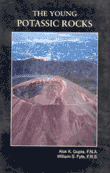
|
The Young Potassic Rocks - Alok K Gupta |
Author |
Alok K Gupta
William S, Fyfe
|
|
Cover Price : Rs 1,295.00
|
Imprint : Ane Books Pvt. Ltd.
ISBN : 9788180520020
YOP : 2003
|
Binding : Hardbound
Total Pages : 392
CD : No
|
|
About the Book :-
Mantle-derived K-rich melts had intrigued most of the founders of petrology and many of the later experts in field and experimental geology, because they are sometimes associated with carbonatites and even diamond. They tend to contain anomalous concentrations of many such elements as K, Rb, Sr, U, F, P, etc. along with Ni, Co, and Cr indicating a mixture of crust and mantle. For key isotopic indicators like Sr86/Sr87, O16/O18, they show great variability. In addition most of these rocks are young with few ancient examples. Is this real or the result of a sampling problem? Modern observations leave no doubt that sediments must be subducted on a large scale. There is now evidence that the upper mantle (and perhaps even the lower mantle) is not homogeneous but rather like a fruit cake, and that thermal anomalies in the mantle resulting from deep mantle plumes or deep subduction, can release these unusual rocks clearing the mantle of left over subduction material. This volume, written for those interested in the geochemistry of K-rich melts from the deep Earth, reviews the present state of knowledge of these unique volcanic rocks.
Contents :-
1. INTRODUCTION
2. GEOCHEMISTRY OF CONSTITUENT MINERALS
3. CLASSIFICATION
4. DISTRIBUTION OF POTASSIC ROCKS
5. RARE EARTH AND TRACE ELEMENT GEOCHEMISTRY
6. Physico-Chemical Conditions Of Formation
7. FELDSPATHOID-BEARING TERNARY SYSTEMS
8. THE INCOMPATIBLE RELATIONSHIP BETWEEN DIFFERENT MINERAL PAIRS IN K-RICH ROCKS
9. Leucite- And Feldspar-Bearing Systems
10. MELILITE- AND LEUCITE-BEARING SYSTEMS
11. The System Leucite-Akermanite-Albite-Sio2
12. THE SYSTEM KALSILITE-FORSTERITE-Sio2 AND P-T STABILITIY OF PHLOGOPITE, K-RICHTERITE AND PHENGITE
13. HIGH PRESSURE-TEMPERATURE STUDY OF K-RICH ROCKS
14. TECTONIC CONTROL
15. Origin Of Potassium-Rich Mafic And Ultramafic Rocks
16. Summary AND CONLUSIONS
References
Author Index
Subject Index.
About the Authors :-
Alok K. Gupta was born on December 25, 1942. He received his Ph.D.from the University of Pittsburgh (U.S.A.), and conducted post-doctoral studies at the following Universities: Pittsburgh and Texas (U.S.A.), Western Ontario (Canada), Ruhr (Germany), Hokkaido (Japan), Melbourne and Tasmania (Australia),. and Bristol (U.K.). He is presently a Professor and Head at the University of Allahabad.
Awards and books: Career Award (University Grants Commission), Shanti Swaroop Bhatnagar Prize, Rhode Memorial Award and the best Teacher Award (Allahabad University). He is an associate editor of the Proceedings Earth and Planetary Sciences (Indian Academy of Sciences) and had been Managing Editor of the Science Letters. He is the author/ co-author/ editor of five volumes/books.
William Sefton Fyfe was born in New Zealand on June 4, 1927. He obtained his Ph. D. from the University of Otago (New Zealand), where he served in the Geology department as a lecturer and a reader. He conducted research at the Universities of California in Los Angeles and Berkeley. He served as a full Professor at the University of California (Berkeley, U.S.A.), Imperial College, London and University of Manchester (U.K.) and the University of Western Ontario (Canada). He is currently an Emeritus Professor at the University of Western Ontario. He has been inducted as a Companion of the Order of Canada in 1989.
Awards and books: Fellow Royal Society (London, U.K.); The Mineral. Soc. America Award, Fellow Royal Soc. (Canada); Logan Medal (Geol. Assoc., Canada); Willet G. Miller Medal, (Royal Soc., Canada); Arthur Holmes Medal (European Geosciences Union); Arthur Day Medal (Geol. Soc. America) and Wollaston Medal (Geol. Soc. London); Roebling Medal (Mineral. Soc. America); Queen’s New Zealand Commemorative Medal; Gold Medal for Science and Engineering (Canada). He is now the Emeritus Editor of Chemical Geology and an Associate Editor of number of other journals. He is the author/ co-author of five internationally acclaimed volumes and books.
|
|
 |

|
Introduction to Soil Physics - Dr. Daniel Hillel |
|
|
Cover Price : Rs 495.00
|
Imprint : Academic Press
ISBN : 8181473639
YOP : 2004
|
Binding : Paperback
Total Pages : 380
CD : No
|
|
DESCRIPTION
This book is a unified, condensed, and simplified version of the recently issued twin volumes, Fundamentals of Soil Physics and Applications of Soil Physics. Nonessential topics and complexities have been deleted, and little prior knowledge of the subject is assumed. An effort has been made to provide an elementary, readable, and self-sustaining description of the soil's physical properties and of the manner in which these properties govern the processes taking place in the field. Consideration is given to the ways in which the soil's processes can be influenced, for better or for worse, by man. Sample problems are provided in an attempt to illustrate how the abstract principles embodied in mathematical equations can be applied in practice. The author hope that the present version will be more accessible to students than its precursors and that it might serve to arouse their interest in the vital science of soil physics.
CONTENTS
Basic Relationships. The task of Soil Physics. General Physical Characteristics of Soils. The Solid Phase. Texture, Particle Size Distribution, and Specific Surface. Soil Structure and Aggregation. The Liquid Phase. Soil Water: Content and Potential. Flow of Water in Saturated Soil. Flow of Water in Unsaturated Soil. The Gaseous Phase. Soil Air and Aeration. Composite Properties and Behavior. Soil Temperature and Hear Flow. Soil Compaction and Consolidation. Tillage and Soil Structure Management. The Field--Water Cycle and Its Management. Infiltration and Surface Runoff. Internal Drainage and Redistribution Following Infiltration. Groundwater Drainage. Evaporation from Bare-Surface Soils. Uptake of Soil Moisture by Plants. Water Balance and Energy Balance in the Field. Bibliography.
Index. |
|
 |

|
Quantitative Geophysics and Geology - Louis Lilboutry |
|
|
Cover Price : Rs 695.00
|
Imprint : Springer
ISBN : 8181282183
YOP : 2004
|
Binding : Paperback
Total Pages : 480
CD : No
|
|
DESCRIPTION
For the first time, a book is available that bridges the gap between geology and geophysics. Its integrative approach presents students and researchers in these disciplines with other methodologies as they try to understand the Earth's processes. The book covers the gamut of Earth Sciences, from earthquakes and seismic exploration to thermal convection and the orogenic processes. Each chapter starts with the well-established facts and then proceeds through a logical framework to the most conjectural questions, such as continental drift in Paleozoic and Precambrian times or mantle convection. Many of the issues discussed here have not yet found unanimously agreed solutions, but the extensive references point the reader to further possibilities.
CONTENTS
Rationale.- Earthquakes and Seismic Exploration.- Petrography.- Geomagnetism and Rock Magnetism.- Mid-Ocean Ridges and Hot Spots.- Movement of Lithospheric Shells.- Subduction Zones and Island Arcs.- Earth Rotation - Gravimetry - Isostasy.- Terrestrial Heat.- Elastic and Isoviscous Models.- Rock Creep.- Terrain Rupture and Earthquake Prediction.- Mechanics of Lithospheric Plates.- Orogenic Processes.- A Short History of the Post-Paleozoic.- Polar and Continental Drifts in the Paleozoic.- Mantle Chemistry and Continent Formation.- Glaciations, Glacio-Isostasy and Sea Level.- Thermal Convection in the Earth.- Annex: Mathematical Complements. |
|
 |
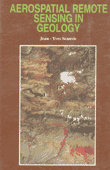
|
Aerospatial Remote Sensing in Geology - Jean-Yves Scanvic |
|
|
Cover Price : Rs 2,500.00
|
Imprint : T & F / Routledge
ISBN : 9054107251
YOP : 2005
|
Binding : Hardbound
Total Pages : 280
CD : No
|
|
DESCRIPTION:-
Remote Sensing is one of the many tools at the disposal of the geologist for studying the earth from different angles. It has its roots in stereoscopic aerial photography which opened the way to photogrammetry and geological photo-interpretation and its development over the past few decades has come about as a result of the tremendous technological advances made during the conquest of Space.
This book, using numerous operational and research-oriented examples combining the technics of digital processing and specialized interpretation, explains how the human eye and brain can extract and use remotely sensed data in the fields of applied geology and mineral exploration. The examples cover varied geological environments and climatic conditions since regional factors have a marked influence on the applicability of available technics, whether they are based on visible, infrared thermal or hyper frequency band of the spectrum on the methodologies used and on the quality of results.
This book is aimed at the practicing geologist who needs to know the possibilities of remote sensing technics when called upon to integrate them in his methodological approach at teachers so that they can enrich their presentation to students with operational examples, and finally at general readers interested in Space and wanting to know the purpose of Earth Observation satellites.
CONTENTS
1.Remote Sensing in Geology
2.Geological Mapping and Remote Sensing
3.Image Lineaments
4.Circular Structures
5.Spectral Signatures of Minerals Rocks and Alterites : Problems of interpretation of Remotely Sensed Data
6.Remote Sensing Geobotany and Geological Landscape units
7.Geology and Digital Image Processing
8.Conclusions
Literature Cited
Colour Plates.
|
|
 |
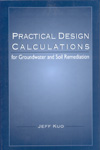
|
Practical Design Calculations for Groundwater and Soil Remediation - Jeff Kuo |
|
|
Cover Price : Rs 895.00
|
Imprint : CRC / Lewis
ISBN : 1566702380
YOP : 2005
|
Binding : Hardbound
Total Pages : 288
CD : No
|
|
About the Book :-
Effective and enduring site restoration involves professionals from many branches of science and engineering. When the time comes for all-important design calculations, that's where conflicts between disciplines become apparent. Due to certain differences in educational training.
Bridge the gap with Practical Design Calculations for Groundwater and Soil Remediation. Written in a user-friendly, "cookbook-style" format, readers can promptly access the necessary information. More than 200 equations, coupled with tables and figures, allow a clear understanding of purposes and procedures.
Contents :-
1. Introduction
2. Site Characterization & Remedial Investigation
3. Plume Migration in Groundwater & Soil
4. Mass Balance Concept & Reactor Design
5. Vadose Zone Soil Remediation
6. Groundwater Remediation
7. VOC-Laden Air Treatment
Index. |
|
 |
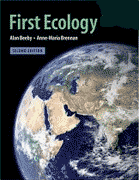
|
FIRST ECOLOGY : Ecological Principles and Environmental Issues - Alan Beeby |
Author |
Alan Beeby
Anne Maria Brennan
|
|
Cover Price : Rs 995.00
|
Imprint : Oxford University Press
ISBN : 0195686292
YOP : 2006
Edition : 2006
|
Binding : Paperback
Total Pages : 384
CD : No
|
|
DESCRIPTION
First Ecology introduces the science of ecology and our species place in the natural world. Beginning with natural selection, it describes our own evolution and expension across the globe. Our understanding of the interactions between species, the communities they form, and their role in ecosystem processes provides a global perspective on the scale of environmental change.
A major revision of the original edition, First Ecology 2/e shows how the main concepts in ecology underpin our efforts to manage and conserve natural systems. We see how population models, community organisation, and ecosystem processes are the basis of fisheries management, pest control, and habitat restoration. It also provides an introduction to large - scale ecology and the scientific background to climate change and the rapid rate of species extinction.
Understanding the science of ecology is crucial to the environmental decisions our species face at the start of the twenty first century. First Ecology is a perfect tool for developing this understanding.
CONTENTS
Preface: Second Thoughts
Acknowledgements
First Words
1. Origins
2. Species
3. Populations
4. Interactions
5. Communities
6. Systems
7. Balances
8. Scales
9. Checks
Glossary
References
Index.
|
|
 |
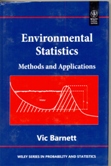
|
ENVIRONMENTAL STATISTICS: MATHODS AND APPLICATIONS , INDIAN REPRINT - VIC BARNETT (EX) |
|
|
Cover Price : Rs 3,995.00
|
Imprint : Wiley India
ISBN : 9788126538065
YOP : 2013
|
Binding : Hardbound
Total Pages : 316
CD : No
|
|
In modern society, we are ever more aware of the environmental issues we face, whether these relate to global warming, depletion of rivers and oceans, despoliation of forests, pollution of land, poor air quality, environmental health issues, etc. At the most fundamental level it is necessary to monitor what is happening in the environment – collecting data to describe the changing scene. More importantly, it is crucial to formally describe the environment with sound and validated models, and to analyse and interpret the data we obtain in order to take action.
Environmental Statistics provides a broad overview of the statistical methodology used in the study of the environment, written in an accessible style by a leading authority on the subject. It serves as both a textbook for students of environmental statistics, as well as a comprehensive source of reference for anyone working in statistical investigation of environmental issues.
• Provides broad coverage of the methodology used in the statistical investigation of environmental issues.
• Covers a wide range of key topics, including sampling, methods for extreme data, outliers and robustness, relationship models and methods, time series, spatial analysis, and environmental standards.
• Includes many detailed practical and worked examples that illustrate the applications of statistical methods in environmental issues.
• Authored by a leading authority on environmental statistics.
Contents
Preface.
Chapter 1: Introduction.
PART I: EXTREMAL STRESSES: EXTREMES, OUTLIERS, ROBUSTNESS.
Chapter 2: Ordering and Extremes: Applications, models, inference.
Chapter 3: Outliers and Robustness.
PART II: COLLECTING ENVIRONMENTAL DATA: SAMPLING AND MONITORING.
Chapter 4: Finite-Population Sampling.
Chapter 5: Inaccessible and Sensitive Data.
Chapter 6: Sampling in the Wild.
Part III: EXAMINING ENVIRONMENTAL EFFECTS: STIMULUS–RESPONSE RELATIONSHIPS.
Chapter 7: Relationship: regression-type models and methods.
Chapter 8: Special Relationship Models, Including Quantal Response and Repeated Measures.
Part IV: STANDARDS AND REGULATIONS.
Chapter 9: Environmental Standards.
Part V: A MANY-DIMENSIONAL ENVIRONMENT: SPATIAL AND TEMPORAL PROCESSES.
Chapter 10: Time-Series Methods.
Chapter 11: Spatial Methods for Environmental Processes.
References.
Index.
|
|
 |
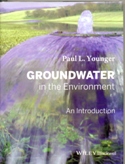
|
Groundwater in the Environment, Indian Reprint - Paul L.Younger (EX) |
|
|
Cover Price : Rs 2,995.00
|
Imprint : Wiley India
ISBN : 9788126546367
YOP : 2014
|
Binding : Hardbound
Total Pages : 330
CD : No
|
|
This accessible new textbook provides a thorough introduction to all aspects of groundwater systems and their management. Using straightforward language and analogies to everyday experiences, it explains the origins, nature, and behavior of subsurface water without resorting to complicated mathematics.
Groundwater in the Environment draws on case studies and cutting-edge research from around the world, giving a unique insight into groundwater occurring in a wide range of different climate zones and geological settings. This book:
provides a robust, practical introduction to groundwater quality, and a succinct summary of modern remedial technologies for polluted groundwaters
explores how groundwater fits into the wider natural environment, especially in relation to freshwater ecosystems
considers the vulnerability of groundwater systems and the effects of pollution, climate change, land-use change, and overexploitation
examines human dependence on water and the effect that this has on groundwater systems
presents vivid examples of geohazards associated with ground waters
explains the whys and wherefores of groundwater modeling
examines competing philosophies of groundwater management, making the case for approaches which take social, economic and ecological issues into account.
Goundwater in the Environment provides an up-to-date, essential introduction for undergraduate students of environmental sciences, geography and geology. It will also be invaluable to professionals working in various fields of natural resource management who need accessible information on groundwater but who are reluctant to read conventional texts full of mathematical notation. For practicing hydrogeologists and engineers without formal training in freshwater ecology, this book provides a `crash course' in the new frontiers of groundwater management.
Artwork from the book is available to instructors online at www.blackwellpublishing.com/younger. An Instructor manual CD-ROM
Contents
Preface.
Acknowledgments.
1. Occurrence of Water Underground.
2. Sources of Groundwater: Recharge Processes.
3. Groundwater Movement.
4. Natural Groundwater Quality.
5. Groundwater Discharge and Catchment Hydrology.
6. Groundwater and Freshwater Ecosystems.
7. Groundwater as a Resource.
8. Groundwater Geohazards
9. Groundwater Under Threat.
10. Modeling Groundwater Systems.
11. Managing Groundwater Systems.
References.
Glossary.
Index
Paul L. Younger (PhD C.Geol. C.Eng.) is HSBC Professor of Environmental Technologies at the University of Newcastle, United Kingdom, where he directs water research within the Institute for Research on Environment and Sustainability, and is also a Director of the leading groundwater control contracting company, Project Dewatering Ltd. His groundwater engineering experience spans more than 20 years and six continents, ranging from hand-digging water wells with indigenous communities in the Americas, through sophisticated numerical modelling of pollutant migration in aquifers, to the design of novel remediation systems for extremely contaminated groundwaters.
|
|
 |
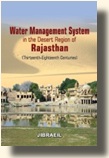
|
Water Management System in the Desert Region of Rajasthan (Thirteenth - Eighteenth Centuries) - Jibraeil |
|
|
Cover Price : Rs 995.00
|
Imprint : Ane Books Pvt. Ltd.
ISBN : 9789386761446
YOP : 2018
|
Binding : Hardbound
Size : 5.50" X 8.50"
Total Pages : 218
CD : No
|
|
About the Book
The present book celebrates the people of the desert region of Rajasthan, who succeeded in developing new techniques to preserve water for their agricultural requirements, not withstanding the dearth they had faced year after year. The most commendable contribution towards water management was by the Paliwal Brahmins, called as ‘The men with scientific knowledge about water management in deserts’, they cluefully managed preservation of both surface and groundwater. The science of underground water movement was well understood by the planners of the wells. Since the water bodies were located at the slope of tanks, water percolated in ground and probably created an underground passage known in the local parlance as gupt nadi. This passed through the wells raising water tables. It was an exceptional technique of storing rain water through percolation process. This availability of water also promoted tourism and the traders frequently visited such qasbas where water could be had.
The book also attempts to interpret the available data regarding the efforts of peasants to evolve an indigenous dam technology in the pre-modern era. This enabled the farmers to grow maximum number of crops, including sugarcane, rice and wheat which needed extra water. Besides, many water bodies were constructed to procure drinking water in towns and villages. A technique called khadeen for irrigation purposes was evolved in rural areas. It can be safely argued that the inhabitants of Rajasthan indigenously and successfully collected, managed and utilized each drop of water for both drinking and irrigation in several pockets of the Thar region.
Contents:
Preface, Abbreviations, List of Figures, 1. Introduction, 2. Water Harvesting and Irrigation Techniques in Phalodi, 3. Technique of Irrigation and Agricultural Production in Nagaur, 4. Water Bodies and Harvesting Techniques in Bikaner, 5. Water Harvesting Techniques in Churu, Chhapar and Bidasar, 6. Water Harvesting and Irrigation Techniques in
Jaisalmer, Conclusion, Appendices, Glossary, Bibliography and Index.
About the Author
Dr. Jibraeil is currently Assistant Professor at the Centre of Advanced Study, Department of History, Aligarh Muslim University, Aligarh. He has also worked as Assistant Professor in Kirori Mal College and Shivaji College, University of Delhi and also taught at the Department of History and Culture, Jamia Millia Islamia, New Delhi. His major
specialization is in Urban History and Water Management System of Rajasthan. He has authored a book titled Economy and Demographic Profile of Urban Rajasthan (Eighteenth – Nineteenth Centuries) besides publishing many research papers in National/International Journals and Proceedings. Two of his papers have been awarded as the best research papers. He received “Prof. S. R. Verma Memorial Award–2017” from the Central Indian Historical Research Foundation, Gwalior (M.P) for his outstanding work on qasba Nagaur. |
|
 |
|